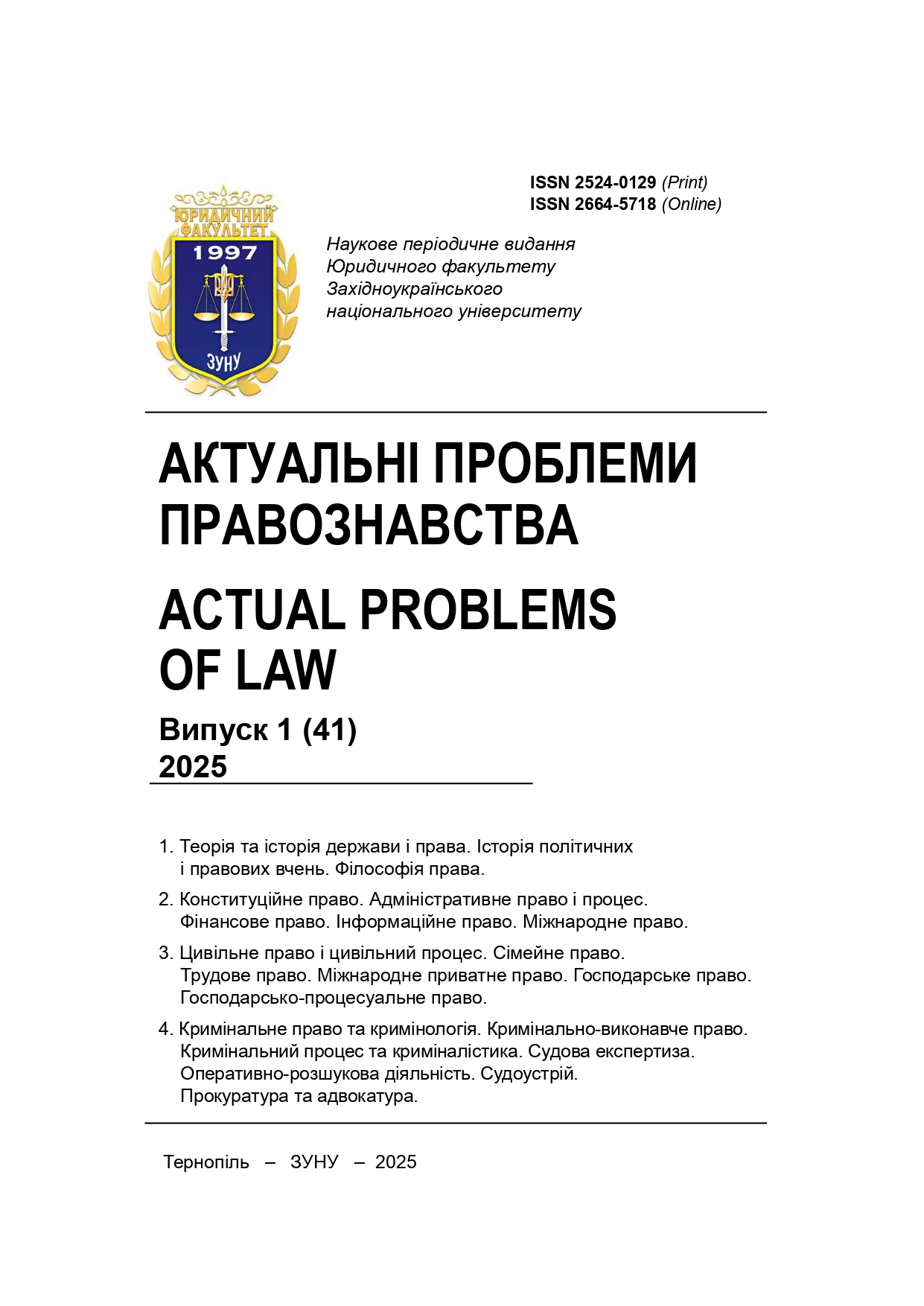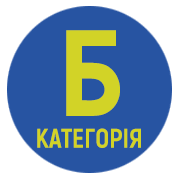Current Trends in Combating Goods Smuggling
DOI:
https://doi.org/10.35774/app2025.01.134Keywords:
crime prevention, goods smuggling, criminal liability, national security, international law enforcementAbstract
The article comprehensively analyzes commodity smuggling, one of the most pressing threats to economic security, financial stability, and international trade relations. The illegal movement of goods across state borders, which is exacerbated by globalization and the simplification of customs procedures, undermines tax revenues, promotes the expansion of the shadow economy, and funds organized crime. The study examines the results of recent scientific works, particularly those by O. O. Durov, R. O. Movchan, and G. Basu, which address the legal, organizational, and technological aspects of combating smuggling. The authors conduct a comparative analysis of international experience, highlighting the specifics of applying criminal and administrative sanctions in various countries.
Attention is given to the analysis of the Ukrainian context, where smuggling is defined as the movement of goods across the customs border without proper control or with the concealment of this fact. This issue has become particularly acute in light of armed aggression and the growth of e-commerce. Implementing the latest technologies, including risk management systems, blockchain technologies, and big data analytics, is noted, which significantly enhances the effectiveness of customs control. An example is the computerized transit system NCTS, which facilitates the prompt exchange of customs information and reduces the risks associated with the illegal movement of goods.
The article also emphasizes the need to integrate legislative changes, strengthen strict sanctions, and improve interagency coordination to create a comprehensive strategy to combat smuggling. It highlights the problems of misinformation and the lack of resources within law enforcement agencies, which complicate the detection and neutralization of illegal schemes. Recommendations are proposed for improving methods of identifying criminal networks, training specialists, and implementing innovative technologies as key factors in ensuring effective countermeasures against commodity smuggling in the context of national security.
References
Dudorov, O. O. & Movchan, R. O. (2021). Kryminalno-pravova zaborona kontrabandy syrovynnykh materialiv: suchasnyi stan ta perspektyvy [Criminal-law prohibition of raw materials smuggling: current state and prospects]. Yurydychnyi naukovyi elektronnui zhurnal – Legal Scientific Electronic Journal, 2, 142-148. URL: http://www.lsej.org.ua/2_2021/36.pdf [in Ukrainian].
Basu, G. (2014). Combating illicit trade and transnational smuggling: key challenges for customs and border control agencies. World Customs Journal, 8(2), 15-26. DOI: https://doi.org/10.55596/001c.93062 [in English].
Tymoshenko, A. V. (2021). Protydii kontrabandi u mytnii sferi [Counteracting smuggling in the customs sphere]. Universytet ekonomiky ta prava “KROK”. URL: https://library.krok.edu.ua/media/library/category/disertatsiji-avtoreferati-vidguki/tymoshenko_2021-disertatsija.pdf (accessed: 30.01.2025). [in Ukrainian].
Kryminalnyi kodeks Ukrainy [Criminal Code of Ukraine]: Zakon Ukrainy vid 5 kvitnia 2001 r. № 2341-III. Vidomosti Verkhovnoi Rady Ukrainy - Bulletins of the Verkhovna Rada of Ukraine, 2001, 25-26, st. 131 [in Ukrainian].
Movchan, R., Dudorov, O., Vozniuk, A., Areshonkov, V. & Lutsenko, Y. (2021). Combating commodity smuggling in Ukraine: in search of the optimal legislative model. Amazonia Investiga, 10(47), 142-151. DOI: https://doi.org/10.34069/AI/2021.47.11.14 [in English].
United States Code. Edition, Supplement 4, Title 18 – Crimes and Criminal Procedure. Sec. 545 – Smuggling goods into the United States, 1930. (2018). Retrieved from https://uscode.house.gov/view.xhtml?req=granuleid:USC-prelim-title18-section545&num=0&edition=prelim [in English].
Tyshchuk, V. V. (2024). Okremi aspekty zabezpechennia prav liudyny pid chas vykorystannia bezpilotnykh litalnykh aparatіv dlia okhorony derzhavnykh kordoniv [Certain aspects of ensuring human rights in the use of unmanned aerial vehicles for border security]. II Vseukrainska naukovo-praktychna konferentsiia – II All-Ukrainian Scientific and Practical Conference, Khmelnytskyi: NADPSU, 180-182. [in Ukrainian].
Hausemer, P., Bosch Chen, I., & Patroclou, N. (2022). A comparative analysis of member states’ customs authorization procedures for entering products into the European Union (PE 734.002). Policy Department for Economic, Scientific, and Quality of Life Policies, Directorate-General for Internal Policies, 1-65. URL: https://www.europarl.europa.eu/RegData/etudes/STUD/2022/734002/IPOL_STU(2022)734002_EN.pdf [in English].
Tyshchuk, V. (2024). Sproby kryminalizatsii poshyrennia dezinformatsii v Ukraini [Attempts to criminalize the spread of disinformation in Ukraine]. Mizhnarodna naukovo-praktychna konferentsiia – International Scientific and Practical Conference, Lviv: LDUVS, 903-908 [in Ukrainian].
Dzhafarov, R. F. (2022). Borytba z informatsiynoiu viinoiu v period voiiennoho chasu [Fighting information warfare during wartime]. Druhuietsia zghidno z rishenniem orhkomitetu za doruchennam Kharkivs'koho natsional'noho universytetu vnutrishnikh sprav vid 30.07.2022. (34), 200-202. Retrieved from https://dspace.univd.edu.ua/server/api/core/bitstreams/5bce4379-3731-4cac-89a3-a885625b0fd9/content#page=200 [in Ukrainian].
Polovnikov, V., Biletskyi, V., Tyshchuk, V. & Overchenko, Y. (2020). Criminological profile of a perpetrator of a high treason. Amazonia Investiga, 9(28), 176-189. DOI: https://doi.org/10.34069/AI/2020.28.04.21 [in English].
Kireieva, O. S., Matniak, V. M., & Overchenko, Y. A. (2023). Vykorystannia rezultatyvnoho operatyvnoho (initsiatyvnoho) poshuku u vyavlenni oznak protypravnoi diialnosti na derzhavnomu korodoni [Use of effective operational (initiative) search in detecting signs of unlawful activities at the state border]. Zhurnal «Naukovi innovatsii ta peredovi tekhnolohii» (Seriia «Upravlinnia ta administruvannia», Seriia «Pravo», Seriia «Ekonomika», Seriia «Psykholohiya», Seriia «Pedahohika»), 10(24), 275-288. DOI: https://doi.org/10.52058/2786-5274-2023-10(24)-275-288 [in Ukrainian].
Tinin, D. H. (2023). Suchasni tendentsii zlochynnosti v darkneti: mozhlyvi shliakhy poperedzhennia v umovakh siohodennia [Current trends of crime in the darknet: possible ways of prevention in contemporary conditions]. Collection of Scientific Papers «SCIENTIA», 126128. Ratrieved from https://previous.scientia.report/index.php/archive/article/view/1400 [in Ukrainian].
Overchenko, Y. A. (2019). Osoblyvosti vzaemodii operatyvnykh pidrozdiliv Derzhavnoi prykordonnoi sluzhby Ukrainy u sferi konfidentsiinoho spivrobitnytstva z inshymy subiektamy [Peculiarities of interaction of operational units of the State Border Guard Service of Ukraine in the field of confidential cooperation with other entities]. Visnyk LDUVS im. E.O. Didorenka - Bulletin of the E.O. Didorenko LDIA, 2(86), 294-304. DOI: https://doi.org/10.33766/2524-0323.86.294-304 [in Ukrainian].
Overchenko, Y. A. (2022). Vplyv rivnia informatsiino-analitychnoho zabezpechennia operatyvno-rozshukovoi diialnosti na efektyvnist antyteroryztychnykh zakhodiv [Influence of the level of information-analytical support of operational-search activities on the effectiveness of counterterrorist measures]. Naukovyi visnyk Dnipropetrovskoho derzhavnoho universytetu vnutrishnikh sprav – Scientific Bulletin of Dnipropetrovsk State University of Internal Affairs, 4, 344-349. DOI: 10.31733/2078-3566-2022-4-344-349 [in Ukrainian].
Pokaichuk, V. Y., Tinin, D. G. & Zavistovskyi, O. D. (2024). Features of service and combat activities of educational institutions with specific learning conditions of the MIA system in consolidated forms with the State Border Service of Ukraine in the controlled border district OGO’s martial state regime: Current. Publishing House «Baltija Publishing». DOI: https://doi.org/10.30525/978-9934-26-442-9-14 [in Ukrainian].





